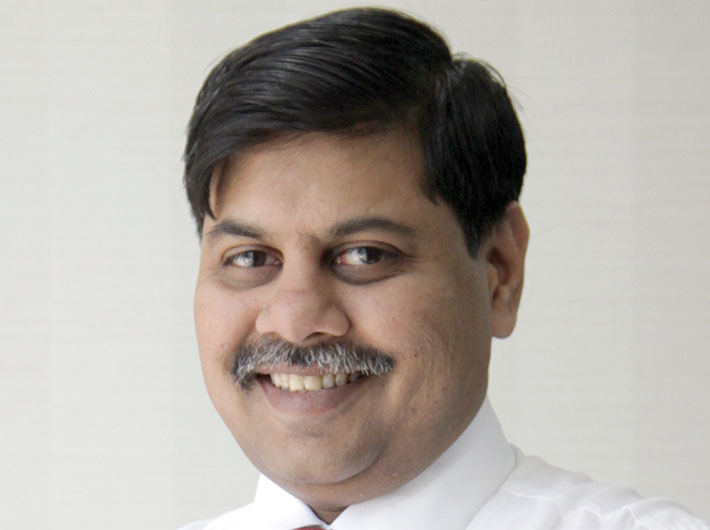A mechanical engineer from Indian Institute of Technology-Varanasi and an alumnus of IIM-Bangalore, Puneet Gupta has over 19 years of experience in technology and government sector and is credited with setting up IBM’s public sector business and making it profitable. In his present role as Director in Cisco he leads the company’s public sector business across India and the SAARC region. He focuses on e-governance, defence and strategic infrastructure projects in central and state governments, data centre and cloud. In an interview with Shubhendu Parth, he speaks on the changes that are driving governance and the role Cisco would like to play in the new cloud-enabled India. Excerpts:
How would you sum up Cisco’s role in India’s e-governance journey so far?
The public sector in Cisco’s scheme of things includes all state government and central government ministries. If you look at the whole e-governance journey, which started way back in 2004-05, Cisco played a very important role. We have been there in most of the central government mission mode projects, including income tax, customs, Employee’s State Insurance Corporation (ESIC) or UID. For state governments we helped establish SWAN and we are happy that a majority of these SWANs are on Cisco technology. We are part of state government projects like APDRP, CCTNS and state data centres. So to that extent our story in the public sector has been extremely good. Apart from e-governance, we have played a strong role in defence and railways. The network spectrum project of the Indian Air Force is completely based on Cisco technology. Most of the railways backbone also uses Cisco technology and we are also involved with several DRDO and home ministry projects.
What role can Cisco play in the MeghRaj or the GI Cloud?
Cloud technology is very close to our heart and we have done a fair amount of work in this space. There are multiple ways in which Cisco can play a role, but a lot depends on how it gets adopted. There is one part that the ministry of communication and IT is leading, which is more of a private cloud. We have to look at best practices, success stories and replicate them in other areas. Cloud is a very powerful technology that will help share applications. However, there are also legal issues and state concerns. Security and autonomy are also issues. So the model built by the department of electronics and IT (DeitY) is a good one to get the states to become stakeholders. It’s time to create an infrastructure where the states can share their successes for adoption by others. There is also a big potential for adoption of public cloud. Though there is a lot of cynicism about public cloud because of issues around security, I feel that a lot of low risk activities can be moved to the public cloud. However, private clouds are a different story and governments are already opening up for adopting it. In fact, several central ministries, especially those that have multiple entities across the country, and also have application that runs across these organisations have a strong reason to get on to the cloud. The cloud will enable such ministries to run a single application centrally and by integrating all the departments through the parent-child architecture. The traditional way of integration would be to build a large ERP, one mega system. Cloud is a cheaper, simpler and better solution. The government has done the right thing by launching MeghRaj and putting the policies in place.
What’s the opportunity for Cisco?
We have the cloud software that’s available within a licensing model of procurement. Then we have the whole underlying data centre infrastructure, which are servers, data centre switching keys and SAN storage that will connect the storage and servers. In fact, we provide the full architecture for setting up a cloud — from intelligence that comes with the software to computational power and switching. I would like to point out that as a company we also provide a lot of thought leadership.
How ready do you think the governments and the bureaucrats are for moving on to the cloud?
Till now the experience of cloud has not been there, except for some public cloud based services like the email. If we go back in time when cloud really happened in the industry, there was a lot of skepticism in the initial days. But when it took off, it took off really very fast. So we really need to watch for that curve. In my view MeghRaj is like the umbrella infrastructure and will pave way for the essential experience. Once people and departments get used to it, they will start exploring newer options. In any case government departments are already comfortable with the private cloud, but the DeitY is really leading the way with the GI Cloud, which will help the government experience a paradigm shift.
As DeitY is coming up with next phase of NeGP, do you see cloud changing the whole citizen service delivery model?
It will change the whole backend infrastructure and the way one makes more and more applications available to people. If there is a particularly successful application available to the citizens of a state, the cloud will give us the ability to make it available to people of other states. As a citizen I am not bothered whether a service is being delivered using a private or a public cloud. In fact, it will drive more G2G transactions and improve the ability of the government departments to share infrastructure and information. There is a lot of IT infrastructure created across the country. But they are yet to be optimally utilised. The cloud will give the governments an opportunity to maximise resource usage. But how it will happen within the federal structure is something the government will have to sort out. As far as the technology is concerned India is moving in the right direction.

